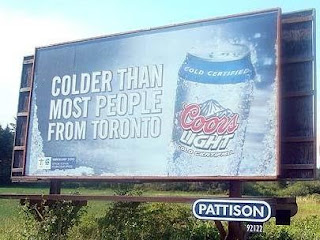According to the article at Bloomberg.com, the issue is with Red Baron's green label and the use of limes. The beer giant claims that: "Brick’s label will lead people to believe its Red Baron beer is associated with, authorized by or in some way connected with Anheuser". A-B is seeking an undisclosed sum in addition to $500,000 in punitive damages.
Bud Light Lime has been incredibly successful both from an awareness campaign and from Canadian sales. It's no wonder others are trying to cash in on the popular flavour. Even still, flavoured beers - particularly lime - are not new. Mexican beers have been served with a lime wedge since the dawn of time. The ol' "Lime n Lager" has been favoured by many as a refreshing twist on a straight beer.
Some thoughts on this fiasco:
- Bud Light Lime was developed partly with the intention of stealing share from expensive imports like Corona. Red Baron, a value-brand priced around 25% lower than Bud Light Lime, is looking to steal share from the global giant. A-B takes offense to this.
- A-B is suing a tiny brewery with limited capacity and distribution for half a million + the undisclosed amount. How much Red Baron Lime do you think they're actually going to sell?
- This is a classic case of David vs. Goliath that, if anything, will probably help generate sales for Red Baron. Really A-B... choose your battles.
- What's more is that Brick recently settled another lawsuit with Labatt (part of the In-Bev A-B family) over packaging similarities between the Red Baron brand and Labatt's value brand, Brava, which is brewed by the recently acquired Lakeport Breweries.
All this aside, I really hope the courts vote in favour of Brick. This law-suit appears to be a scare tactic more than anything legit and I'm glad Brick has decided to stand their ground this time around. I'm all for defending your IP, trademarks, etc. against legitimate threats or theft, but come on....
...do you really think anyone would be confused by these two packages?









